Eight Iranian Fighters Killed In Syria Returned Home For Burial
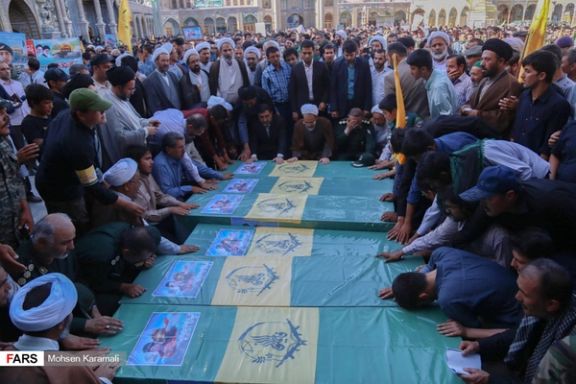
The bodies of eight Iranian fighters who were killed in strikes in Syria have been repatriated and are set to be buried soon.

The bodies of eight Iranian fighters who were killed in strikes in Syria have been repatriated and are set to be buried soon.
Tasnim News Agency, affiliated with the Revolutionary Guard, reported that the deceased have been identified through DNA tests. Four of the fighters hailed from Tehran, while the remaining four were from Kermanshah, Golestan, Gilan, and Qazvin provinces. The report did not specify when or in which part of Syria the militants were killed.
However, on November 13, a war monitor reported that at least eight pro-Iran fighters, including one Syrian and Iraqi nationals, were killed in US strikes in eastern Syria.
Washington announced the raids as a response to attacks on American forces the day before. Defense Secretary Lloyd Austin stated, “US military forces conducted precision strikes on facilities in eastern Syria used by Iran’s Islamic Revolutionary Guard Corps (IRGC) and Iran-affiliated groups in response to continued attacks against US personnel in Iraq and Syria.”
Israeli and US armed forces also carried out separate airstrikes targeting Iranian-backed groups in Syria on November 9, killing a total of 12 fighters.
The recent increase in attacks on US troops is linked to the ongoing conflict between Israel and Hamas, which escalated following a cross-border attack by the Iran-backed Palestinian militant group from Gaza on October 7.
There are approximately 2,500 American troops in Iraq and around 900 in Syria, part of the broader effort to prevent a resurgence of the ISIS group.
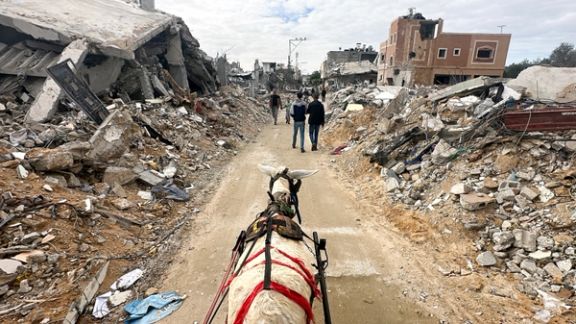
Top Iranian officials have been increasingly making odd statements in recent weeks, trying to convey a sense of invincibility and success, as Hamas struggles to survive.
The commander of the Revolutionary Guard’s navy, Alireza Tangsiri, announced on Tuesday that “We have photos and films about all their movements,” referring to the US naval task force, headed by the aircraft carrier Dwight D. Eisenhower, that has entered the Persian Gulf.
In an age of satellites and surveillance drones, this is a simplistic statement, to say the least, and not clear what it intends to prove. But this is not the only such statement in recent weeks. Iranian commanders have been making claims of military prowess and deploying new weapons systems since the Gaza war broke out and the US deployed two naval strike forces in the region.
The commander of Iran’s aerospace force, Gen. Amir-Ali Hajizadeh declared on November 13 that “Iran is currently at the pinnacle of its power and cannot be threatened.” He went on to say the United States was engaging in diplomacy with Iran using a “language of requests and pleas” amid attacks by Iranian proxy groups on American bases in the region.
While officials try to claim that they were not aware of the October 7 Hamas attack and have nothing to do with strikes by militant groups on US bases, they also try to present these as success to domestic audiences.

The Islamic Republic has found itself in a precarious situation since the October 7 Hamas terror attack, as Israel responded with overwhelming force in Gaza. After years of propaganda about the readiness of the regime to support war against “the Zionist enemy,” suddenly the rulers in Tehran found themselves in a situation to prove their threats. However, they chose not to get directly involved in the war. Similarly, Hezbollah, Tehran’s crown jewel proxy force, also chose not to engage in a full war with Israel.
Many Iranians on social media began to ridicule officials, saying that they should go to Gaza and fight, while Hamas was being pummeled by the Israelis.
In response, a throng of IRGC officers and officials have made triumphant statements that Israel is all but defeated and is taking its last breath. They have praised Hamas for emulating the spirit of the Islamic Republic in resisting Israel and the United States.
Iran’s minister of defense, Mohammad-Reza Ashtiani on Monday declared that Iran has complete dominance in the region, and that is the reason the United States blames Tehran for every event. “The Americans attribute any event to us because they know that Iran has dominance, and it is the Islamic Republic of Iran that takes the lead in the region."
Mojtaba Abtahi an official in charge of Gaza issues, appearing on state television, insisted that Hamas is in a strong position and added, “With the Hamas attack on Israel, a new world has been created.” He claimed that the people of Gaza are “happy” about current conditions and “Have a lot of hope about the future.”
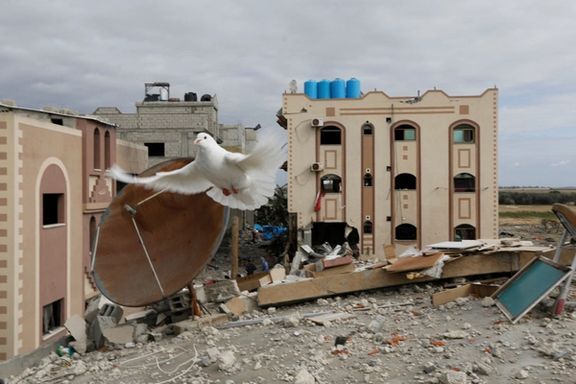
But core loyalists also make strange declarations about other issues. A senior cleric was quoted on Monday as saying that people should get used to living on less, and that will solve the country’s economic crisis. "If we want to address the major economic challenges of the country, we need to instill a culture of contentment and satisfaction in the hearts and minds of individuals,” Ayatollah Mohammad-Reza Naseri declared. He is Supreme Leader Ali Khamenei’s representative in Yazd province. Citizens, whose living standards have drastically declined in the past five years, view such declaration with contempt, knowing that officials do not need to worry about putting food on the table.

An Iranian prisoner accused of the murder of an IRGC Basij member in 2019 was executed on Tuesday as the regime's killing spree continues.
Saleh Mottahari-Rad, the legal and parliamentary affairs deputy of the provincial law enforcement commander in Khuzestan province, made the announcement regarding the execution.
According to Mottahari-Rad, the prisoner was accused of killing an officer named Yaser Sepidrou and a Basij militia member named Mohammad Ali Kazemi.
The incident reportedly occurred on December 3, 2019, in Shadegan county and according to media outlets the convict was apprehended on the spot for the murder charge, but the location of the execution has not been disclosed.
Local media have refrained from disclosing the name and identity of the executed person.
Simultaneously, the execution sentence of at least three other inmates—Hamid Bakhshayesh, Eqbal Fat’hollahi, and Mohsen Amrayi—was carried out in Ghezel Hesar Prison in Karaj. The three individuals were sentenced to death on charges related to drug offenses.
In mid-November, both the UN Human Rights Committee and Antonio Guterres, the Secretary-General of the United Nations, expressed concerns in separate statements about the accelerated implementation of death sentences in Iran. The UN Human Rights Committee's report emphasized the severity of executions in Iran, covering charges related to drug crimes and insulting the government and religion.
On November 2, the UN published a report stating that the Islamic Republic executed at least 419 individuals in the first seven months of the current year. This figure represents a 30% increase compared to the same period in 2022.

The UN nuclear watchdog claims Iran is not fulfilling commitments and there is no progress ahead, yet no resolution was issued at the body’s key summit.
Washington and its European allies did not move to censure Iran at the critical meeting of the International Atomic Energy Agency (IAEA) in Vienna from November 20 to 24 while Tehran is enriching uranium at levels with no non-military use and is stockpiling more of it.
After the previous round of the 35-nation IAEA Board of Governors meeting in September, the Islamic Republic ejected one-third of the inspectors with expertise in uranium enrichment. And each time the board issued resolutions as the IAEA decided it is “essential and urgent” that Iran act to fulfil its legal obligations and clarify all outstanding safeguards issues without delay, Iran responded by augmenting activities.
Iran has steadily leveled up its nuclear game since 2021, developing more plants, enriching more uranium at higher levels, stockpiling more, and simultaneously eroding IAEA monitoring. The latest IAEA report said Iran has enough uranium enriched to up to 60% for three atom bombs and is still stonewalling the agency on key issues, with IAEA Director General Rafael Grossi highlighting that “significant safeguards issues remain outstanding" in Iran’s nuclear program. Experts say analyzing IAEA recent reports proves that Iran now has enough enriched uranium to produce weapons-grade uranium (WGU) for one nuclear weapon in as little as seven days and up to 12 nuclear weapons in five months.
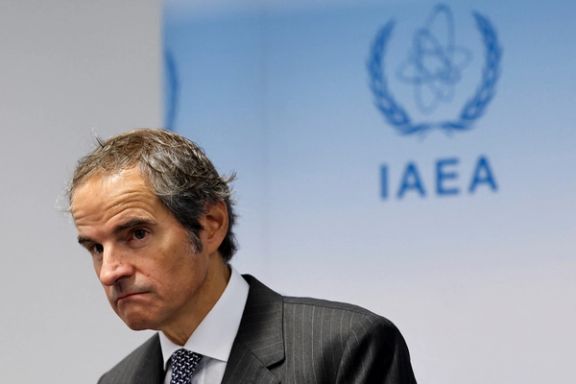
"If Iran fails to implement the essential and urgent actions contained in the November 2022 Resolution and the 4th March Joint Statement in full, the Board will have to be prepared to take further action in support of the (IAEA) Secretariat to hold Iran accountable in the future, including the possibility of a resolution," Britain, France, Germany -- the so-called E3 -- and the US warned in September. Since the last resolution last November, the West has refrained from formally condemning Tehran's progress or setting a deadline for Iran to come into compliance with a five-year IAEA investigation into Iran's violations of the Nuclear Non-Proliferation Treaty (NPT).
Andrea Stricker, a research fellow at the Foundation for Defense of Democracies (FDD), has called on the West to push back Iran’s nuclear advances, asking, “How many inspectors must Iran eject and how many nuclear weapons’ worth of uranium will Tehran amass before the West stands up to the regime? The current approach ensures Iran can stroll to nuclear weapons at a time of its choosing.”
Pointing out Iran’s destabilizing activities, Anthony Ruggiero, Senior Director of FDD’s Nonproliferation Program said, “Tehran funds and supports proxies attacking Israel and is on the threshold of nuclear weapons. President Biden should call for a special IAEA board meeting to censure Iran and support the IAEA’s director general. Washington must fully implement US sanctions and respond to Tehran’s proxies attacking US troops by targeting Iranian personnel responsible for the attacks.”
There is bipartisan consensus at US Congress that a nuclear Iran is unacceptable, but no measure did manage to slow down Tehran’s nuclear drive.
It seems that some of world leaders have come to terms with a nuclear Iran and its hypothetical atomic bombs, and apparently a dozen more states that are at the verge of going nuclear. During the World Nuclear Exhibition in Paris on Tuesday, Grossi said, "We already have 10 countries which have entered the decision phase (to build nuclear power plants) and 17 others which are in the evaluation process. There will be a dozen or 13 (new) nuclear countries within a few years.” Producing electricity also gave birth to Iran’s nuclear program.
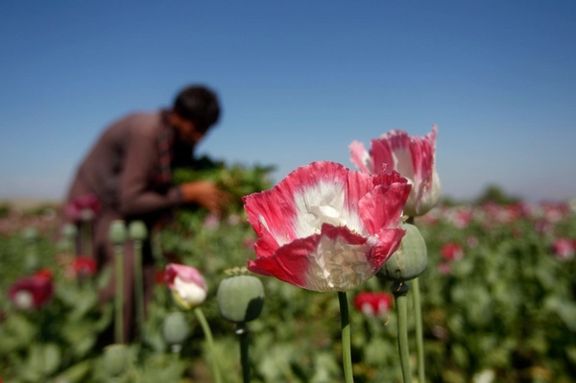
Iran has rejected the recent United Nations report that claims a 95% reduction in opium production in Afghanistan.
The UN report published on November 5 suggests that the Taliban's ban on drugs in Afghanistan led to a significant drop in opium poppy cultivation while data from the body last year suggested Afghan farmers' income tripled.
Amir Abbas Lotfi, the Director General of the International Relations Office of the Drug Control Headquarters in Iran, contradicted the UN findings, stating that not only did Afghanistan decrease opium production, but it also expanded the production of psychotropic substances despite the ban imposed by the Taliban.
Lotfi pointed to another UN report from last year, highlighting that the income of Afghan farmers had tripled suddenly, reaching over $4 billion.
"Traditional drug trafficking, such as opium and psychotropic substances, from Afghanistan to Iran is still occurring," he said.
Iran, often recognized as a significant global conduit for drug trafficking to European markets, is allegedly implicated in these activities, with accusations of involvement by the Islamic Revolutionary Guard Corps (IRGC). Reports from Western and regional intelligence agencies suggest that the Islamic Republic, along with its paramilitary partners, plays a notable role in drug trafficking networks operating in the Middle East and the West.
Investigations indicate a notable increase in the transfer of large narcotics shipments from Iran to Arab countries, Southeast Asia, and Europe. However, Iranian authorities place the blame on Western governments.
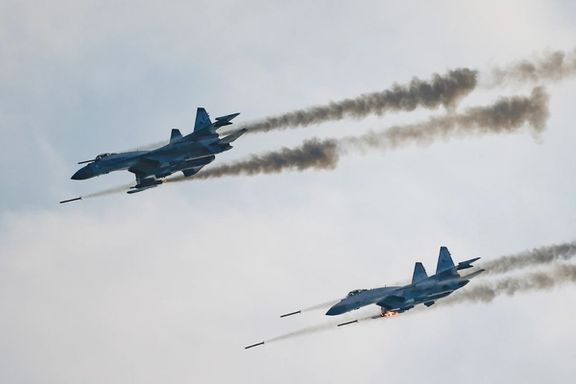
Amid burgeoning ties, Iran's deputy defense minister has announced the purchase of the advanced Sukhoi-35 fighter jet amongst its latest arms deal with Moscow.
Mehdi Farahi told IRGC-affiliated Tasnim news agency on Tuesday that Iran anticipates the delivery of the Mil Mi-28 attack helicopter, Sukhoi-35 fighter jet, and Yak-130 training aircraft imminently as the regime ramps up its supplies from the fellow sanctioned nation.
As of now, Russian authorities have not commented on the latest deal which gives it access to some of Russia's most sought-after technology. Moscow's invasion of Ukraine and its heightened need for weapons, particularly drones, has led to a deepening of ties between the two nations keen to ramp up their military capabilities in the face of global sanctions.
Iran's pursuit of the Russian Sukhoi-35 stems from its perception as a formidable rival to the American F-35. Given the aging fleet of fighter jets, many acquired during the reign of the Shah, the acquisition signals a potential modernization of Iran's air force.
Contradictory statements regarding the acquisition process have become a recurrent theme in Iran's discourse. In June, Air Force Commander Hamid Vahedi expressed the necessity for the Sukhoi-35 but remained uncertain about its deployment timeline.
A month later, the Defense Minister under President Ebrahim Raisi indirectly acknowledged disruptions in the fighter jet purchase contract. Mohammadreza Ashtiani, responding to queries about the Sukhoi-35 acquisition, hinted that the capability for domestic production played a role in the decision.
Speculation surrounding potential disruptions in military cooperation between Russia and Iran has surfaced, with some suggesting that Israel may have influenced Russia to postpone the delivery of the advanced fighter jets.